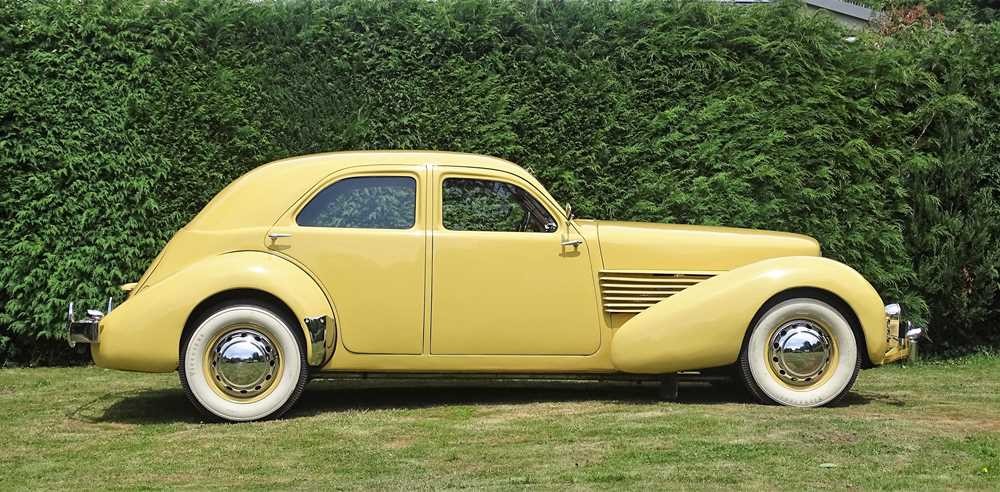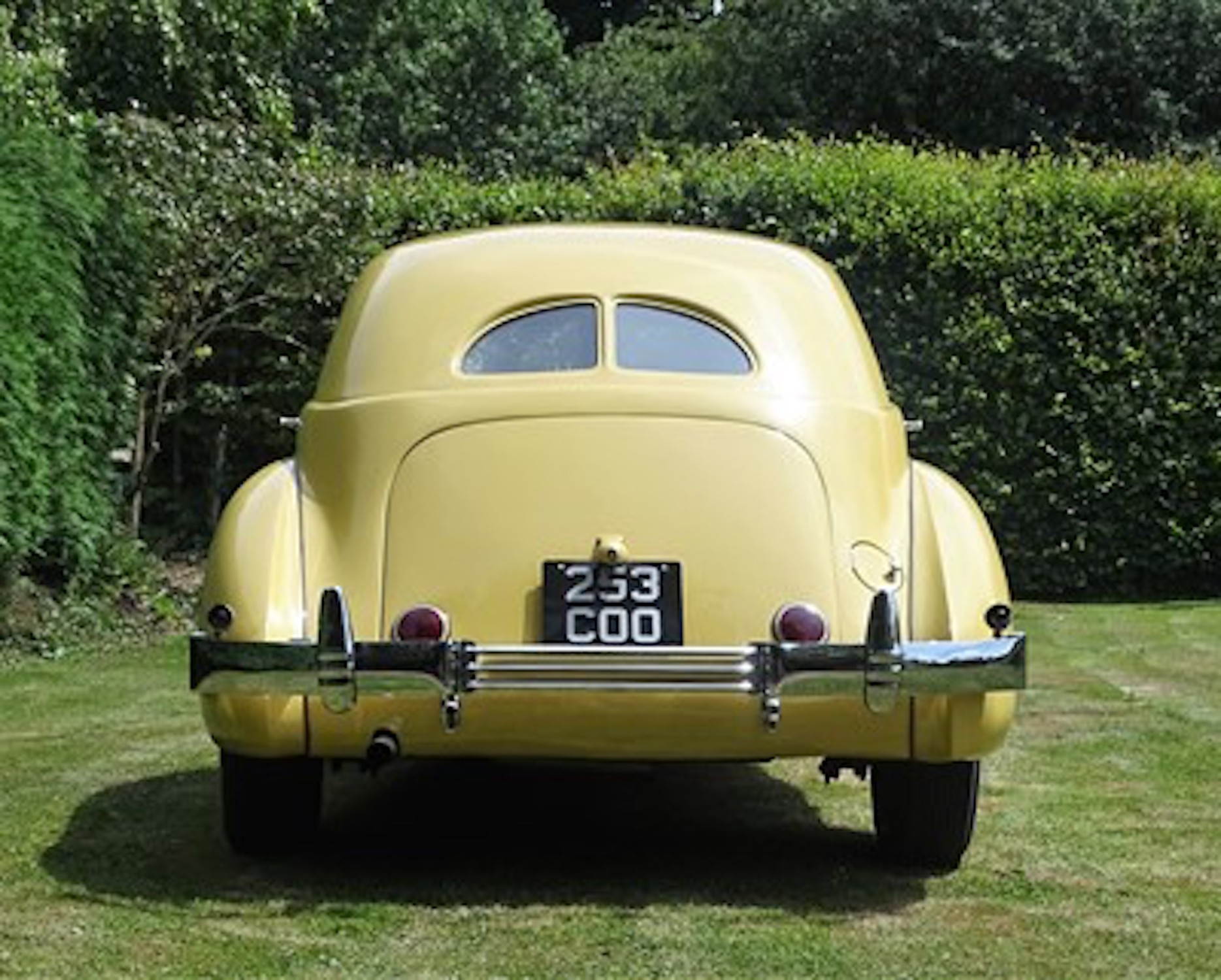DAUGHTER’S WEDDING CAR WORTHY OF NEW YORK’S MUSEUM OF MODERN ART
FOR SALE WITH H&H CLASSICS FOR £50,000 TO £60,000
10/07/2020 Cars
When a Dorchester based man was asked by his daughter for a yellow car to carry her to her wedding this is what the indulgent dad produced – a 1936 Cord 810 Westchester Sedan, now for sale some years after the marriage ceremony. This splendid car is estimated to sell for £50,000 to £60,000 with H&H Classics at their next Live Auction Online on July 22. One just like it is featured in MOMA, New York.
This magnificent Cord has been the subject of significant restoration work and comes with a comprehensive file of invoices. The car boasts front wheel drive, a Lycoming V8 Engine and was produced in the penultimate year of Cord production.
“One of the few automobiles deemed worthy of inclusion in the Museum of Modern Art in New York, and arguably the most easily recognised American car of all time, the Cord 810 debuted in November 1935, receiving a rapturous reception at US automobile shows,” says Damian Jones, Head of Sales for H&H Classics.
The car was the work of a team headed by Duesenberg designer Gordon Buehrig, the 810 body style with louvred 'coffin' nose, streamlined, spat-shaped wings and absence of running boards would prove immensely influential, its distinctive features being borrowed by most mainstream manufacturers by the decade's end.

The 810's arrival marked the end of a hiatus in Cord production, its predecessor - the L29 - having disappeared in 1931. Errett Lobban Cord had introduced the L29 in 1929 as a gap-filling model priced between his Cord Corporation's Auburn and Duesenberg lines. Powered by a Lycoming straight eight, the Cord L29 featured front wheel drive, then in vogue at Indianapolis. Its front-drive layout made for a low-slung frame, and the freedom this gave coachbuilders meant that the Cord was soon attracting the attention of master craftsmen on both sides of the Atlantic.
Front-wheel-drive like the L29, the 810 differed from its predecessor by virtue of its more compact Lycoming V8 engine and four-speed, pre-selector gearbox. Set further back in the chassis, the former endowed the 810 with better balance and came with 125bhp in standard trim or 170bhp when supercharged. Custom sedans on a longer wheelbase joined the four-model 812 range for 1937, though it is doubtful whether any independent offering ever matched Buehrig's original Beverly fastback sedan for sheer style. Priced competitively in the $2,000-3,000 range, the 810/812 should have been a huge success, though, sadly, this was not to be. The Cord Corporation was in deep financial trouble, and when its proprietor sold up in August 1937, it spelled the end not just for Cord, but for Auburn and Duesenberg as well.

.png)

